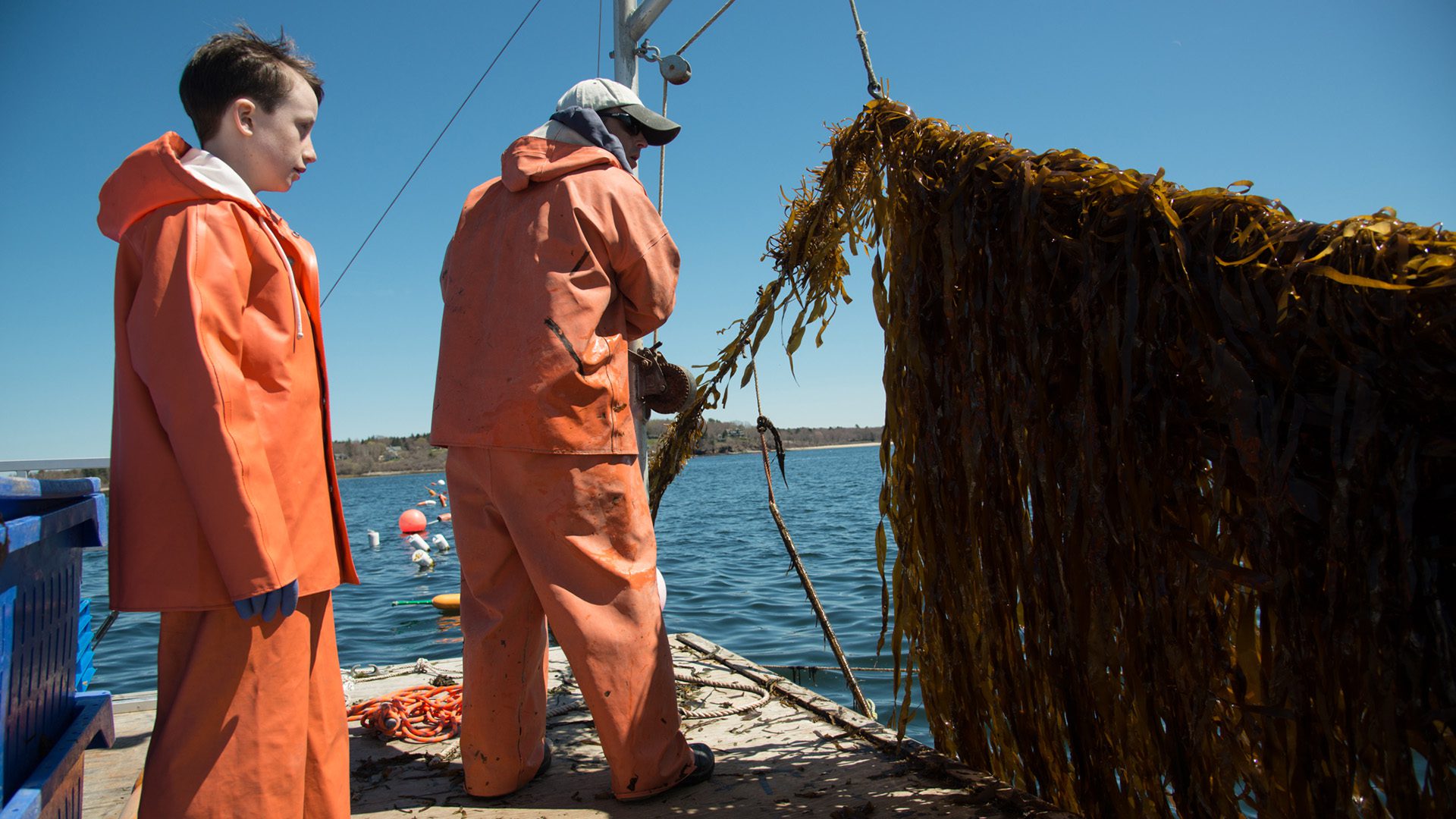Behind the Blast
The marine superintendent who blew up Jaws
By Evan Lubofsky | June 5, 2025
It was like lying on a bed of nails.
That’s how former WHOI marine superintendent Richard “Dick” Edwards felt as he climbed into Bruce, the 25-foot mechanical great white shark, whose steel-framed insides were lined with shards of fiberglass. “It was so rough inside, I couldn’t put my hand down,” he recalled in an oral history he gave in 2005 to the Data Library and Archives (DLA) at WHOI.
It was June 1, 1974, and Edwards was on the set of Steven Spielberg’s classic thriller, Jaws, which will hit theaters this summer for the film’s 50th anniversary. Spielberg’s team had initially reached out to Dan Clark, former second mate of R/V Atlantis, to see if he’d assist them in—spoiler alert—blowing up the prop for the movie’s final scene. He had a blasting permit and was based in Woods Hole, a quick boat ride from where the movie was being filmed in Martha’s Vineyard.

Actor Roy Scheider during the filming of Jaws on Martha's Vineyard. (Photo source: Everett Collection)
Clark opted out. “I don’t want to do that damn thing,” he told his good friend Dick Edwards. Then, knowing that Edwards also had a blasting permit and expertise in working with explosives from serving in the Navy during World War II, Clark extended the request to him.
“Would you do it?” he asked.
Edwards thought about it for a bit. “How much?” he replied.
“I’ll make it worth your while,” Clark told him. That was good enough for Edwards.
The night before the big blast, Edwards loaded up his 63-foot buoy tender, the John A. Edwards, with dynamite, tied up in Woods Hole's Great Harbor, and slept onboard. In the morning he picked up his wife, Anne, who planned to assist him on the movie set, and they steamed over to the Vineyard.
There, they met up with Spielberg, then 27 years old, and members of the film crew that would be helping out on the explosion scene. After chatting for a bit on the dock, they got to work.
The first order of conditions was to outfit the animatronic shark with explosives. Edwards wanted to position the sticks of dynamic from inside of the shark, but he couldn’t crawl through the mouth opening—too many teeth. So, he entered through a “back door,” as he put it, and wriggled his way in. That’s when he began to feel the fiberglass shards along the bottom piercing his skin.
“I got a pair of gloves to help and knee pads,” Edwards recalled, and then wrapped towels around his knees to protect them as he crawled through the mechanical beast with the explosives. He got a close-up look at the engineering work that brought Jaws to life: hydraulics that moved its jaws up and down, and pneumatic controls that worked its body movements.
Anne, meanwhile, handed him globs of raw steak and hamburger through the shark’s mouth to be placed inside the body. Since Jaws was filmed long before modern special effects, stuffing Jaws with red meat was a clever, albeit crude, way to achieve the kind of realistic, guts-galore effect the production team had envisioned.
For the Edwards, the filming of Jaws turned out to be a family affair. At a nearby beach, their then-12-year-old son, Sean Riley, had been hired as an extra and got paid $25 a day for his service.
“I got to wear the same clothes every day and got paid for going to the beach all summer,” Riley said.
After Edwards planted the explosives and raw meat in the necessary spots, the film crew got ready to shoot their climactic scene. Once the cameras were rolling and the detonation went off, the Vineyard sky rained fake shark guts. The dramatic scene left many relieved moviegoers cheering, yet still too terrified to step foot in the ocean.
Years later, Peter Benchley, who wrote the novel Jaws, expressed regret over how the story gave sharks a bad rap. And many scientists today take issue with how the movie portrayed sharks as vengeful creatures.
“It’s unfortunate the kind of attention that Jaws originally brought to these awesome animals," says WHOI marine ecologist Camrin Braun. But he feels that now, a half century later, there's a greater appreciation for sharks among the general public. "These days, it seems more and more people recognize how critical these top predators are to a healthy ocean," he says.
According to Edward’s daughter, Arden Edwards, working on the Jaws set had been an “interesting” experience for her dad, but one he’d felt slightly embarrassed about. “My father was a very serious man, so doing something like this was very different for him,” Arden said.
What he was most proud of, she recalled, was his service in the U.S. Navy, where he led a minesweeping operation that destroyed more than 350 mines in Korean harbors, and his subsequent work at WHOI, where he applied his knowledge of explosives to seismic studies and handled the day-to-day logistics of WHOI’s research fleet between 1960 and 1988. Even after retiring, Edwards continued work at WHOI as a volunteer in the institution’s archives department. He passed away in 2007.
Edwards built an undeniable legacy in science and service. But during that surreal summer of 1974, he was the man who took down Jaws.







